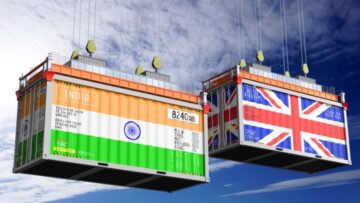The key to fabric saving, cutting room productivity, and the planning of deliveries to suit customer requirements lies to some extent on the intelligent way at converting the order into a ‘cut plan’. Most factories do not monitor their cutting room productivity which many a times lead to poor work supply. It is essential that the cutting room is intelligently managed and controlled for increased factory performance, observes Roger Thomas of Methods Apparel Consultancy.
There are huge potential savings just hidden from view, the results of this technology are very exciting and can certainly help to reduce costs and improve profitability by putting in very little effort. Tighter prices and shorter lead times lead to a situation where the Buyer is King! It’s a fact that to remain in business, one has to constantly struggle to save money by way of identifying and seizing opportunities, improving techniques and taking advantage of new thinking and novel concepts.
Following on the fundamentals of more the time and inputs saved the better the profitability, a new software programme has been developed to optimize the cutting room productivity; this software makes markers in such a way that it maximizes the number of plies and lay length, hence giving the minimum the number of markers and bodies laid. At the same time it smoothens the order quantity and the remainders are always in a ratio, allowing the efficient use of remnant pieces. A major feature of the algorithm is that it is designed to ensure that remainders of all sizes are in ratio, and allows the user to choose combinations of sizes which best use end-bits.
In order to start this process, one needs to specify certain conditions like:
1. Maximum number of bodies that can be marked in this fabric (aim should be to maximize),
2. Number of plies that can be layed in this fabric on one lay (aim should be to use maximum in a given lay),
3. What per cent addition will the buyer allow when delivering this order,
4. Minimize number of lays,
5. Improve fabric utilization, and
6. Reduce the work-load in the cutting room.
We took one particular order from a factory; and recorded marker plan of the factory (Table 1). The order was cut in 9 lays using 9 different markers and total number of pieces cut was 1416 at an average consumption of 1.61 metres. Then the same order was planned using cut plan software (Table 2). Various alternatives of cut order plans were made using the software, keeping in focus on maximizing fabric saving; an option was chosen, where the same order could be cut in 6 lays, using only 6 different markers and total 1492 pieces were cut at an average consumption of 1.34 metres, resulting in approximately 14% fabric savings. The fabric savings were calculated by re-making the original markers on automatic marker software, and re-making the new set of markers using the same automatic marker making system so that both examples were done under exactly the same circumstances, so that the fabric savings shown are not affected by the skill of the CAD operator.
| Marker No. | Frequ-ency | Bodies | Plies | 38 | 40 | 42 | 44 | 46 | 48 | 50 | Lay length | Used fabric (in metre) | Cut quantity | Marked consumption |
| 1 | 1 | 3 | 100 | 1 | 0 | 1 | 0 | 0 | 1 | 0 | 4.73 | 473.00 | 300 | 1.58 |
| 2 | 1 | 4 | 100 | 0 | 1 | 0 | 1 | 1 | 0 | 1 | 5.78 | 578.00 | 400 | 1.45 |
| 3 | 1 | 3 | 112 | 0 | 0 | 0 | 1 | 1 | 0 | 1 | 6.39 | 715.68 | 336 | 2.13 |
| 4 | 1 | 2 | 91 | 0 | 1 | 1 | 0 | 0 | 0 | 0 | 2.64 | 240.24 | 182 | 1.32 |
| 5 | 1 | 2 | 65 | 1 | 0 | 0 | 0 | 1 | 0 | 0 | 2.75 | 178.75 | 130 | 1.38 |
| 6 | 1 | 1 | 32 | 0 | 0 | 0 | 1 | 0 | 0 | 0 | 1.45 | 46.40 | 32 | 1.45 |
| 7 | 1 | 1 | 11 | 0 | 0 | 0 | 0 | 0 | 1 | 0 | 1.57 | 17.27 | 11 | 1.57 |
| 8 | 1 | 1 | 10 | 0 | 0 | 1 | 0 | 0 | 0 | 0 | 1.42 | 14.2 | 10 | 1.42 |
| 9 | 1 | 1 | 15 | 1 | 0 | 0 | 0 | 0 | 0 | 0 | 1.35 | 20.25 | 15 | 1.35 |
| TOTAL | 9 | 18 | 536 | 180* | 191* | 201* | 244* | 277* | 111* | 212* | 28.08 | 2283.79 | 1416 | 1.61** |
| **Weighted average consumption | ||||||||||||||
| *The total figure is derived by multiplying the pieces in respective sizes per marker with the number of plies laid for that marker | ||||||||||||||
| Table 1. Marker plan done by the factory | ||||||||||||||
Ten more orders were then taken from a group of factories and marker plans were redone using all of the restrictions required by the concerned factory (lay length restrictions, number of plies allowed) and compared the results between factory and Method’s software.
As can be seen from Table 3, 10% fewer bodies were cut (means reduced cutting time); the number of plies layed to produce the orders was reduced by 9% (means reduced spreading time) and number of lays was reduced by 22% (means overall reduction of cutting time and cost). Also many of the orders that were re-planned showed considerable fabric savings (these points are highlighted in yellow.
The software was also compared to one of the major marker planning programmes available in the market and following were the results found (Table 4):
1. Less Bodies marked – The CAD department work is reduced by 12%,
2. Cutting is reduced by 12%,
3. The number of lays required to produce the same number of garments is reduced by 23%,
4. Laying time will be reduced, the software will enable longer lays to be made and as can be seen the amount of markers required is drastically reduced, the use of table space will be improved thus allowing space utilization to be improved,
5. Numbering, sorting and all other handling will also be reduced since 12% less parts need to be handled.
Lotting
Few other problems which the companies routinely encounter also came to light such as how to organize cutting to ensure that customers receive their garments, how to ensure that fabric lots are separated and shades are not mixed in separate deliveries.
| Marker No. | Frequ-ency | Bodies | Plies | 38 | 40 | 42 | 44 | 46 | 48 | 50 | Lay length | Used fabric (in metre) | Cut quantity | Marked consumption |
| 1 | 1 | 4 | 110 | 1 | 1 | 0 | 0 | 0 | 1 | 1 | 5.63 | 619.30 | 440 | 1.41 |
| 2 | 1 | 4 | 107 | 0 | 0 | 1 | 1 | 1 | 1 | 0 | 5.67 | 606.69 | 428 | 1.42 |
| 3 | 1 | 4 | 66 | 1 | 0 | 1 | 0 | 1 | 0 | 1 | 5.52 | 364.32 | 264 | 1.38 |
| 4 | 1 | 4 | 70 | 0 | 1 | 0 | 2 | 1 | 0 | 0 | 4.11 | 287.70 | 280 | 1.03 |
| 5 | 1 | 3 | 24 | 0 | 0 | 1 | 0 | 1 | 0 | 1 | 4.38 | 105.12 | 72 | 1.46 |
| 6 | 1 | 1 | 8 | 0 | 1 | 0 | 0 | 0 | 0 | 0 | 1.36 | 10.88 | 8 | 1.36 |
| TOTAL | 6 | 20 | 385 | 176* | 188* | 197* | 247* | 267* | 217* | 200* | 26.67 | 1994.01 | 1492 | 1.34** |
| **Weighted average consumption | ||||||||||||||
| *The total figure is derived by multiplying the pieces in respective sizes per marker with the number of plies laid for that marker | ||||||||||||||
| Table 2. Markers done by the software | ||||||||||||||
On in-depth investigation of the cutting room procedures in few factories, it was also found that many of the factories have to deliver lot wise orders, which means as the fabric arrives it is distributed over all the sizes in the same ratio as the order quantity and markers are planned accordingly (Table 5).
| Laid Bodies | No. of Lays | Laid Plies | Fabric | |||||||
| Sl.No. | Existing method | New method | Difference in percentage | Existing method | New method | Difference in percentage | Existing method | New method | Difference in percentage | Saving |
| 1 | 16 | 17 | 6% | 6 | 5 | -17% | 623 | 465 | -25% | 6% |
| 2 | 35 | 29 | -17% | 11 | 6 | -45% | 1027 | 855 | -17% | 2% |
| 3 | 35 | 27 | -23% | 12 | 8 | -33% | 1212 | 1189 | -2% | 1% |
| 4 | 31 | 25 | -19% | 10 | 8 | -20% | 1001 | 988 | -1% | 1% |
| 5 | 78 | 68 | -13% | 16 | 13 | -19% | 2586 | 2444 | -5% | 0% |
| 6 | 53 | 51 | -4% | 11 | 11 | 0% | 1798 | 1675 | -7% | 0% |
| 7 | 42 | 41 | -2% | 23 | 21 | -9% | 2100 | 1989 | -5% | 1% |
| 8 | 13 | 12 | -8% | 6 | 4 | -33% | 558 | 418 | -25% | 16% |
| 9 | 18 | 20 | 11% | 9 | 6 | -33% | 536 | 385 | -28% | 17% |
| 10 | 6 | 4 | -33% | 6 | 4 | -33% | 293 | 278 | -5% | 1% |
| Total | 327 | 294 | -10% | 110 | 86 | -22% | 11734 | 10686 | -9% | |
| Table 3. Methods showing significant reduction in workload and saving major fabric in many cases | ||||||||||
The software handles these problems easily because of the linking of the markers to the availability of fabric in various lots; the software automatically distributes the fabric over all the sizes considering the order ratio and plans the markers accordingly.
| Comparison | Methods | External Software | Difference |
| No. of Lays | 10 | 13 | -23% |
| Bodies | 57 | 65 | -12% |
| No. of Plies | 1638 | 1819 | -10% |
| Table 4. Methods versus external software | |||
Different lots may be laid together, but would be separated as different shades.
| Order quantity | % of the order | 4 | 210 | 400 | 552 | 309 | 170 | 8 | 1655 |
| 1st Lot- A | 27% | 1 | 57 | 108 | 149 | 83 | 46 | 2 | 447 |
| 2nd Lot- B | 29% | 1 | 61 | 116 | 160 | 90 | 49 | 2 | 480 |
| 3rd Lot – A | 44% | 2 | 92 | 176 | 243 | 136 | 75 | 4 | 728 |
| Table 5. lotwise distribution of order | |||||||||
Conclusion
This article indicates the importance of the function of cut order planning; in most cutting rooms the most experienced person is the person who completes this, the software simplifies the process considerably and the job can now be done by much less experienced people with a little training.






